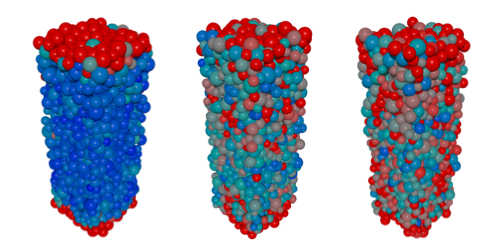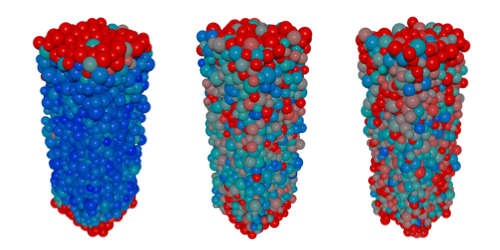Why Vapor-Deposited Glasses Are so Stable
Ordinary glasses, which are made by quickly cooling a liquid, can take millennia to settle into a stable structure. But glasses produced by the vapor deposition of molecules on a surface can be stable right away—a useful property for high-tech devices like telescope optics or optical fibers. Researchers, however, still don’t understand the microscopic origin of this ready-made stability. New simulations by Ludovic Berthier at the University of Montpellier, France, and colleagues link this ultrastability to the efficient diffusion of molecules during the deposition process. The findings could help researchers optimize vapor-deposition schemes.
Simulating the process by which a glass forms and stabilizes is challenging because the dynamics of the particles in the glass have to be described on a broad range of spatiotemporal scales. To do so, Berthier et al. apply a computational approach that they recently developed. First, they use an algorithm to “create” a glass film like that produced from vapor deposition. They then determine if the simulated vapor-deposited film is in a stable equilibrium state by using a Monte Carlo algorithm that entails swapping the positions of different particles in the glass. This swapping enables a fast exploration of the particles’ possible potential-energy configurations, pinpointing equilibrium states that are otherwise impossible to calculate.
The simulations show that particles diffusing over the substrate are far more mobile than those diffusing in the bulk of the glass. This high surface mobility allows the particles to find the most stable equilibrium configurations—a process that in ordinary glasses can only proceed through the much slower diffusion of particles through the bulk. What’s more, the simulations deliver optimal parameters—such as temperature and deposition rate—for producing ultrastable glasses.
This research is published in Physical Review Letters.
–Matteo Rini
Matteo Rini is the Deputy Editor of Physics.





